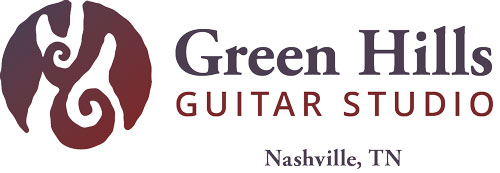How to Use Inversions for Better Voice Leading
Voice leading is a crucial skill for any guitarist aiming to create smooth and polished chord progressions. One of the most practical ways to improve your voice leading is by using inversions—chords where the notes are rearranged to place a different note in the bass. Inversions help you connect chords seamlessly, minimize large jumps between notes, and bring a refined touch to your playing.
In this guide, we’ll cover what inversions are, how they can improve your voice leading, and how to use them in various musical contexts. We’ll also walk through a practical example of applying inversions in a 12-bar blues progression in A. By the end, you’ll understand how to incorporate inversions to make your playing more fluid and expressive.
What Are Chord Inversions?
An inversion occurs when a note other than the root is played as the bass note of a chord. This rearrangement changes the chord’s sound and creates new possibilities for transitioning between chords.
For example, in a C major chord (C-E-G):
- Root Position: C is the lowest note.
- First Inversion: E is the lowest note.
- Second Inversion: G is the lowest note.
Each inversion retains the essential character of the chord while offering a unique tonal color and new opportunities for voice leading.
Why Inversions Improve Voice Leading
Voice leading focuses on the smooth movement of individual notes (or “voices”) between chords. Using inversions minimizes large leaps and creates a more connected, flowing sound.
Here’s why inversions are so effective:
- Smoother Transitions: Inversions keep bass notes close to one another, making chord changes less abrupt.
- Harmonic Interest: They add variety and subtle complexity to chord progressions.
- Ease of Playability: Inversions often simplify finger placement, especially in complex progressions.
By incorporating inversions into your playing, you’ll not only enhance the musicality of your chord changes but also gain a better understanding of the fretboard.
How to Practice Inversions
Practicing inversions effectively requires more than just rote repetition. Here’s how to approach it with variety and purpose to deepen your understanding and skills:
1. Start with Triads Across the Neck
- Begin with simple triads (three-note chords) in both major and minor shapes.
- Play each triad in root position, first inversion, and second inversion.
- Practice moving smoothly between inversions up and down the neck, focusing on clarity and evenness of tone.
2. Focus on String Sets for Versatility
- Work on inversions across different string sets, such as strings 6-4, 5-3, or 4-2.
- Compare how the same inversion sounds on different sets to understand tonal variations.
- Challenge yourself to shift seamlessly between string sets during progressions.
3. Use Rhythmic Patterns with a Metronome
- Instead of just playing inversions straight through, use a metronome to add rhythmic variations (e.g., quarter notes, eighth notes, or syncopated patterns).
- Gradually increase the tempo as you gain fluency, ensuring accuracy at every speed.
4. Integrate Inversions into Real Progressions
- Practice using inversions in common chord progressions, such as I-IV-V or ii-V-I.
- Pay attention to how inversions improve transitions and reduce leaps in the bass line.
- Experiment with progressions in different keys to build adaptability.
5. Combine Inversions with Other Techniques
- Mix inversions with arpeggios to explore their melodic potential.
- Use inversions alongside open chords or barre chords to create dynamic textures.
- Try incorporating inversions into familiar songs to see how they enhance the overall feel.
By practicing inversions in varied and musical ways, you’ll not only develop technical fluency but also gain the creative confidence to use them effectively in your playing.
Using Inversions in a 12-Bar Blues Progression
Let’s examine how inversions can create efficient voice-leading movements in a 12-bar blues progression in the key of A. Pay attention to how the voices of each chord transition to the next chord.
This approach minimizes large jumps, connects the chords seamlessly, and adds a touch of sophistication to the progression. Practice this sequence slowly, focusing on the smooth transitions between each chord.
Tablature for a 12-Bar Blues Progression in the Key of A:
Applications of Inversions in Different Styles
- Pop and Rock: Inversions are commonly used to add texture and depth to straightforward progressions. For example, first inversions can create a lift in choruses.
- Jazz: Jazz guitarists use inversions extensively for creating fluid, voice-led progressions and for comping in ensembles.
- Folk and Acoustic: Inversions can create beautiful, flowing accompaniments, especially in fingerstyle playing.
- Classical: Classical guitar relies heavily on inversions to create smooth bass lines and maintain harmonic continuity.
Experiment with applying inversions in different styles to expand your musical vocabulary and adaptability.
Tips for Using Inversions Effectively
- Think Ahead: Plan your chord transitions in advance to determine where inversions will work best.
- Listen Closely: Pay attention to how each inversion affects the overall sound and flow of your progression.
- Combine with Open Chords: Mix inversions with open chords for a rich, dynamic sound.
- Experiment with Bass Lines: Use inversions to create walking bass lines that add movement and interest to your playing.
The Coda
Inversions are a powerful tool for any guitarist looking to improve voice leading and add depth to their playing. By rearranging chords to place different notes in the bass, you can create smoother transitions, enhance your harmonic vocabulary, and unlock new creative possibilities.
Ready to take your understanding of inversions and voice leading to the next level? Contact Green Hills Guitar Studio for personalized guitar lessons in Nashville or online. Our experienced instructors are here to help you refine your technique and achieve your musical goals.






